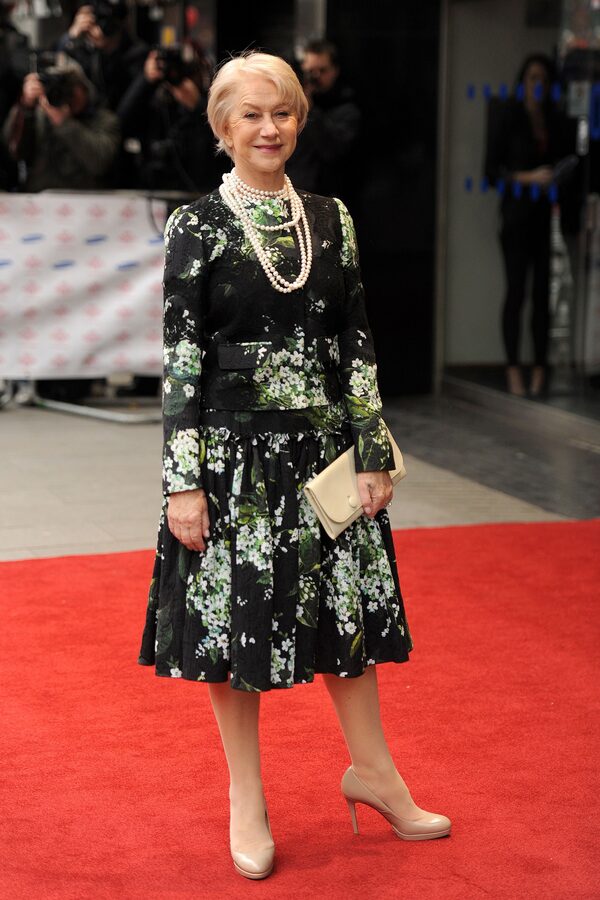In public appearances, Cate Blanchett has repeated a distinctive frothy black Armani Privé.MARIO ANZUONI/Reuters
Big Fashion was patting itself on the epaulettes as fashion month began earlier this September, thanks to a congratulatory round of “green is the new black” headlines. Since the Group of Seven summit in Biarritz, France, last month, 32 global companies representing more than 150 brands have joined French President Emmanuel Macron’s environmental Fashion Pact. The voluntary compliance initiative sees well-known signatories – from Adidas to Zegna – commit to goals around reduced carbon emissions, sustainable textile options and single-use plastics.
These luxury and mass brands are being lauded by environmental activists and outlets such as Fortune and Teen Vogue for their principles, in spite of the fact their targets are being promised for distant 2030 and 2050, and that pact doesn’t mention supply-chain labour practices. It also omits the biggest offender: our own appetites.
The production – and overproduction – of clothing and a culture of waste are what drive systemic problems, resulting in environmental abuses and human-rights violations and contributing to the current global climate emergency. That’s why throughout September, as runway shows from New York to Paris have been touting the next-big-thing in fashion, British secondhand-clothing chain Oxfam has been campaigning for consumers to resist buying new clothes for the month.
As consumers, we are enthralled by the cult of the new. And as far as I’m concerned, the offender with the highest profile isn’t one company, it’s the red carpet. Since we’re eliminating single-use plastics, isn’t it time to take the red carpet step-and-repeat more literally and also eliminate single-use gowns? It’s easy to overlook, because what could tuxedos and dresses that cost tens of thousands of dollars have to do with the fast-fashion crisis? Our blanket coverage of red-carpet events – premieres, photo calls, promotional appearances – normalizes planned obsolescence and the expectation that one must strike a pose in a new look, every time. That attitude toward special-occasion dressing used to be reserved for one’s wedding dress, not an everyday wardrobe.

Helen Mirren reworked a favourite floral Dolce & Gabbana dress during appearances in New York.Andrew Matthews/The Canadian Press
Red-carpet culture, and the coverage ecosystem around it, trickles down to everyday behaviour on social media, namely Instagram, and in our closets, and it powers our unsustainable fast-fashion appetite for low prices and high turnover. The Copenhagen Fashion Summit has estimated that fast fashion contributes 92 million tons of solid waste to landfill every year. Zara, the world’s largest fashion brand, single-handedly produced more than 450 million items last year, according to veteran fashion journalist Dana Thomas, who recently wrote Fashionopolis: The Price of Fast Fashion and the Future of Clothes. Thomas also claims that the average garment is only worn seven times before it’s thrown away. No wonder, when 500 new styles hit the Zara shop floor every single week. Zara’s recent zero-landfill-waste sustainability pledge and the pact’s promises don’t amount to as much when the problem is behaviour, not materials.
The proliferation of rent-a-frock companies purport to contribute to solving the problem, but they’re only masking the real issue: our reluctance, because we’ve fallen out of the habit, to pay a bit more for something a little less of-the-moment, that we can wear again and again. To inspire thrift, let’s start with stars paying for their frocks instead of borrowing.

Tiffany Haddish amortized the $4,000 price tag on a white Alexander McQueen dress over several high-profile wears.Matt Sayles/The Associated Press
The pragmatic comedian Tiffany Haddish, for example, amortized the $4,000 price tag on a stunning white Alexander McQueen dress over several high-profile wears, including presenting at the Oscars. In public appearances, Cate Blanchett has repeated a distinctive frothy black Armani Privé. “Particularly in today’s climate, it seems wilful and ridiculous that such garments are not cherished and reworn for a lifetime,” she said. Lately, the Duchess of Cambridge has also taken to shopping her closet and re-styling past outfits with different hats or coats. Whether the lull between wears is years (Blanchett), months (Haddish) or days (Helen Mirren, who reworked a favourite floral Dolce & Gabbana dress during appearances in New York) apart, this should not be a novelty. Nor should it be treated as fashion faux-pas, as one tabloid originally suggested when it shamed Dame Helen; wearing an outfit on multiple occasions should go back to being the norm.
Over the course of the recent Toronto International Film Festival, for example, Canadian actor Naomi Snieckus, host of the Firecracker Department podcast, wore the same red fit-and-flare dress to a dozen festival red carpets and parties and chronicled the outfit variations on Instagram. Designed by Ryerson Fashion alum Matin Mithras and mixed and restyled with different accessories, it was the second TIFF in a row that Snieckus opted to make a sustainable style statement, saving herself both time (the shopping, the fittings) and expense. “Men can wear a black suit and change their shirt and get away with it time and time again,” she says. “And when you feel good in something, why not?”
Not only did Snieckus welcome the creative space and energy it freed up – “I need my brain to watch movies, talk about movies and do interviews,” she says – there was an additional benefit, and it dovetails with the ongoing #AskHerMore campaign to redress sexist red-carpet reporting and re-focus on achievement.
“I think if women wore the same clothes more often we’d talk less about what they’re wearing and more about what they are doing,” Snieckus says. “If you take away that talk it becomes, 'Look what she’s working on these days.’”
Live with style. We have a weekly Style newsletter on fashion and design trends, plus shopping tips and inspiration. Sign up today.